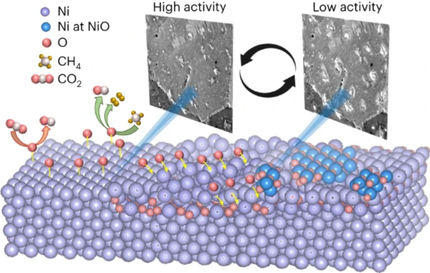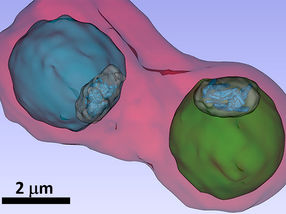A 21st century adaptation of the Miller-Urey origin of life experiments
A safe approach to investigating how organic molecules could come about from inorganic compounds
The Journal of Visualized Experiments published a modern approach to a famed experiment that explored one of the most intriguing research questions facing scientists today—the origin of life on earth.
The protocol, titled Conducting Miller-Urey Experiments, is comprised of a modern and simplified approach to the method used by Dr. Stanley Miller and Dr. Harold Urey in 1953. Their research evaluated the possibility of organic compounds important for the origin of life to have been formed abiologically on early Earth.
"The results of this study showed that amino acids, the building blocks of life, could be formed under primitive Earth conditions," said Eric Parker of the original Miller-Urey Experiments. Parker is one of the researchers behind the simplified procedure, which he and his team developed at the Georgia Institute of Technology. Scientists from NASA—one of whom, Jeffrey Bada, was once a student of Dr. Miller's—and the Tokyo Institute of Technology were also involved.
"Miller was hesitant to encourage people to repeat the experiment due to the risk of inducing an explosion," said Parker, explaining why his lab chose to publish their version of the experiment in JoVE's signature step-by-step video format. "Often times, after reading a methods description it may not be fully clear how a certain research task was carried out," he said, "...Therefore, this article was written to inform interested researchers how to conduct the experiment safely, in part, by giving precise instructions on evacuating [ignitable gasses like oxygen, methane and hydrogen from] the reaction apparatus before initiating the spark."
Despite these dangers, Parker said, there remains much interest among scientists to recreate the Miller-Urey experiment and to perform variations of it for testing new research ideas. He and his colleagues are preparing to publish a second article comparing their novel spark-discharge experimental results to original samples from the 1958 Miller-Urey cyanamide spark-discharge study that followed the landmark paper.
In the meantime, Parker and his colleagues hope that their JoVE video will encourage more research with Miller-Urey type experiments. Such efforts could help answer key questions in the origin of life field, such as which prebiotic conditions may have facilitated the synthesis of specific organic compounds believed to be important for life, Parker said.
Other news from the department science
Most read news
More news from our other portals
See the theme worlds for related content
Topic world Synthesis
Chemical synthesis is at the heart of modern chemistry and enables the targeted production of molecules with specific properties. By combining starting materials in defined reaction conditions, chemists can create a wide range of compounds, from simple molecules to complex active ingredients.

Topic world Synthesis
Chemical synthesis is at the heart of modern chemistry and enables the targeted production of molecules with specific properties. By combining starting materials in defined reaction conditions, chemists can create a wide range of compounds, from simple molecules to complex active ingredients.













![[Fe]-hydrogenase catalysis visualized using para-hydrogen-enhanced nuclear magnetic resonance spectroscopy](https://img.chemie.de/Portal/News/675fd46b9b54f_sBuG8s4sS.png?tr=w-712,h-534,cm-extract,x-0,y-16:n-xl)










































